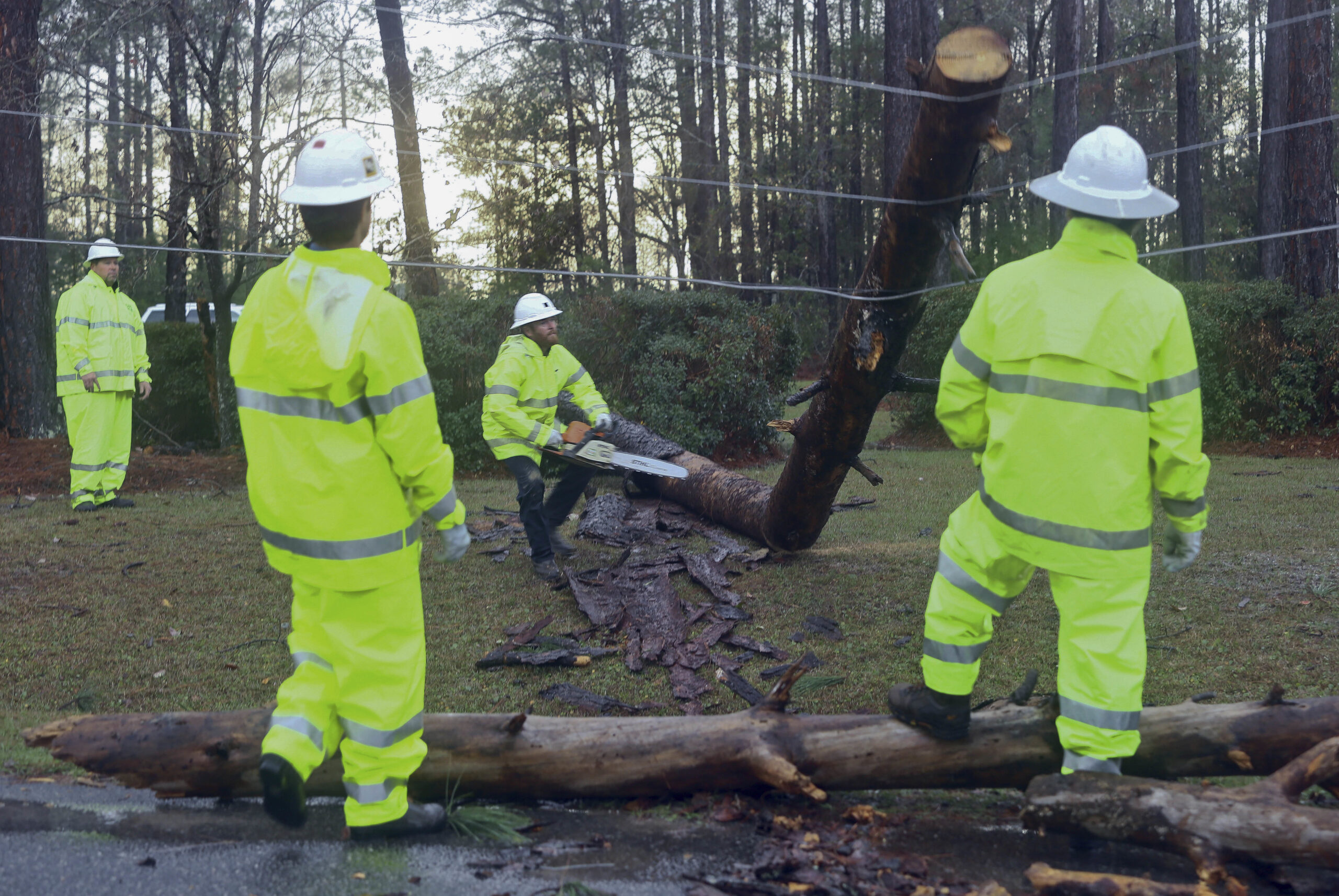Post-Irma, Why Not Bury All Power Lines?

At center, David Barnes, with Colquitt EMC, lunges backwards as a limb he has just cut snaps into the air from tension on downed power lines Sunday Jan. 22, 2017 in Valdosta, Ga. The National Weather Service said Sunday that southern Georgia, northern Florida and the corner of southeastern Alabama could face “intense and long … Continued
Phil Sears / Associated Press
Irma damaged nearly 1,500 utility poles and knocked down more than 2,000 trees, according to Georgia Power. So why not bury more power lines, so the lights don’t go out when a tree falls nearby?
In short: It’s really expensive, and it’s not necessarily the best solution.
“The common thought is that if we bury the lines, then when we have storms like this, then we won’t have outages,” said Craig Bell, a spokesman for Georgia Power.
But if lines are underground other things, like floods, can cause outages, Bell said
“And, in fact, when we have outages with underground cables, it takes longer to fix, and it’s more disruptive because we have to dig up the affected area to find the break in the line and to replace that,” he said.
In metro Atlanta, Georgia Power actually has more underground power lines than overhead. About 13,000 miles of wire are buried, and about 11,000 are up on poles, according to Bell.
The city of Sandy Springs requires new developments to have buried power lines.
Burying wires after development is expensive. Ted Kury, who directs the University of Florida’s Public Utility Research Center, said it can cost about a million dollars a mile to bury power lines. In urban areas, it’s even more.
“When you’re talking about storm hardening, it really is a question of weighing the costs versus the benefits customers are going to receive,” Kury said. “Undergrounding is a component of the overall conversation, but it is not the conversation as a whole.”
He said beyond burying power lines, other solutions include changes to pruning practices and replacing utility poles with ones made of stronger material. But it really depends on the location, and most important, Kury said, is communication.
“Sit down and talk about what are you doing, what are you spending, what are the benefits, and then once you’ve made that investment, revisiting that investment,” he said. “What can you learn from other states, from other utilities that have gone through what you’re going through?”
In Florida, utilities are required to get together once a year to talk about storm preparation. They talk about plans are for the upcoming storm season and how they performed the previous year, said Kury.
That’s not law here in Georgia, but Georgia Power and state regulators say they do discuss storm preparedness.
9(MDAxODM0MDY4MDEyMTY4NDA3MzI3YjkzMw004))







